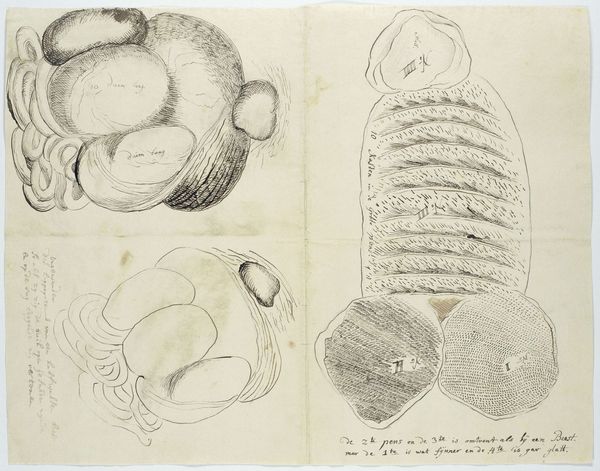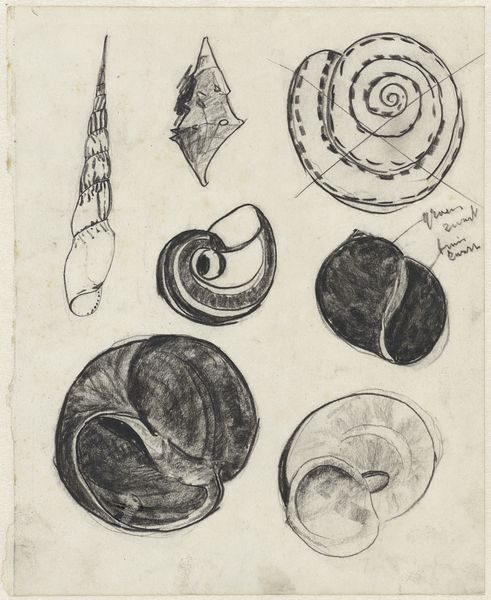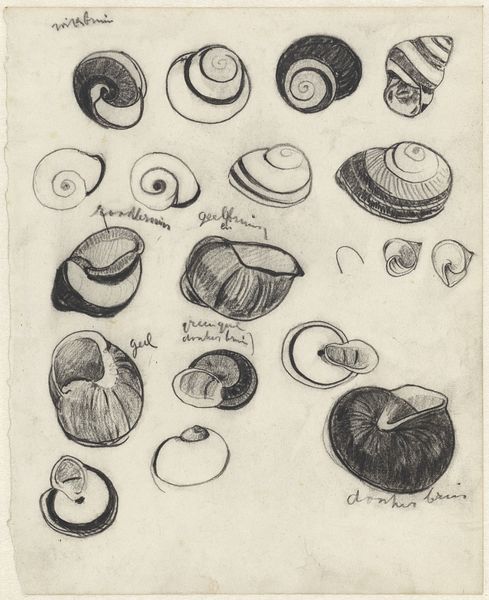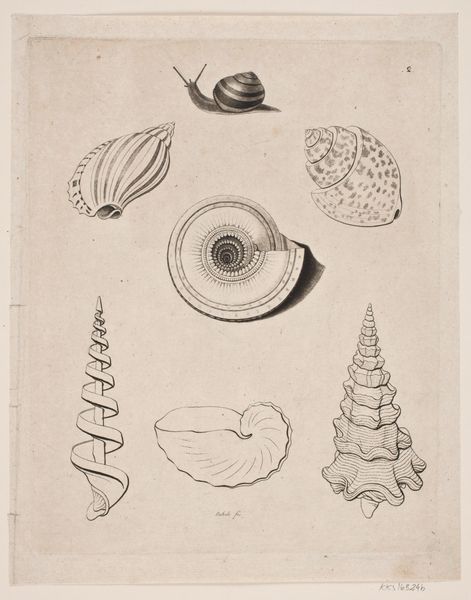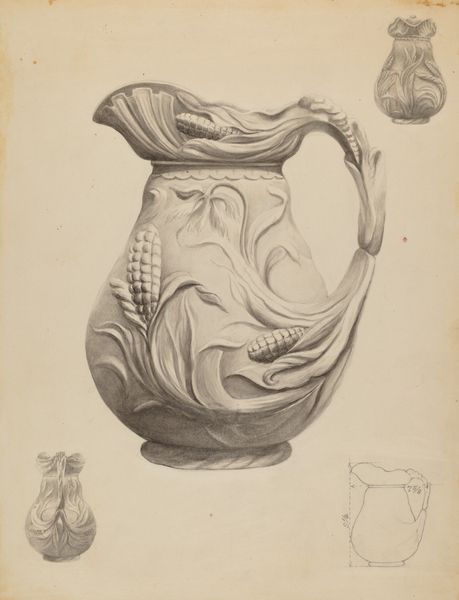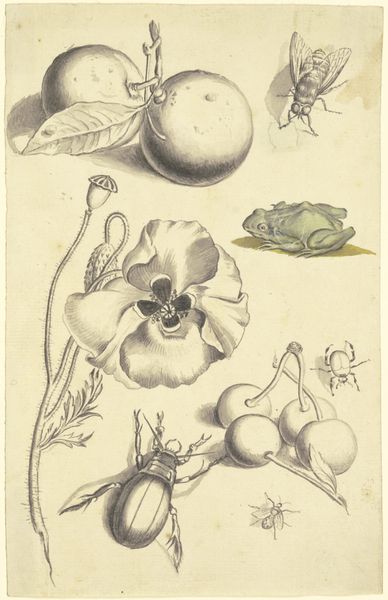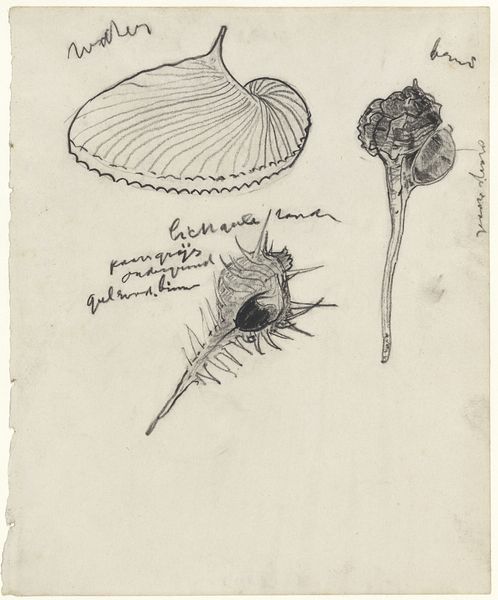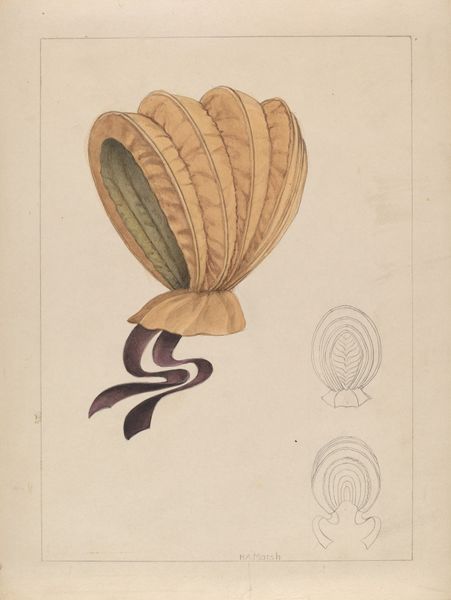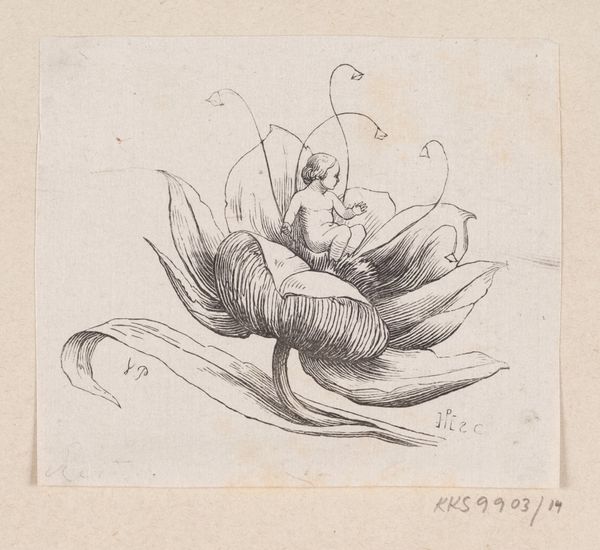
drawing, dry-media, pencil
#
drawing
#
light pencil work
#
quirky sketch
#
pencil sketch
#
old engraving style
#
dry-media
#
personal sketchbook
#
ink drawing experimentation
#
pen-ink sketch
#
pencil
#
sketchbook drawing
#
storyboard and sketchbook work
#
academic-art
#
sketchbook art
#
realism
Dimensions: height 204 mm, width 166 mm
Copyright: Rijks Museum: Open Domain
Editor: This is "Studieblad met schelpen," or "Study Sheet with Shells," by Theo Nieuwenhuis, made sometime between 1876 and 1951. It's a pencil drawing on paper. There’s a vulnerability to the lines and erasures; it feels like looking at the artist’s raw thought process. What do you make of it? Curator: The intimate and exploratory nature you point out resonates deeply. These "Study Sheets" offer a glimpse into an artist's thinking. These sketches aren’t simply about capturing the likeness of shells; they reveal a relationship to the natural world, a desire to understand its forms. Consider the history of natural science illustrations; the impulse to document and classify nature reflects specific social and intellectual contexts. How do you think this connects to a broader understanding of 19th- and 20th-century artistic practices? Editor: I suppose I hadn't really considered its place in history beyond just a personal sketch. But thinking about it, there's a certain detached scientific curiosity. I wonder if that's reflective of the artist's role in society, sort of observing and documenting life. Curator: Precisely. And thinking intersectionally, consider the economic and social contexts that permitted an artist the leisure to engage in such studies. Were these explorations tied to a specific class or gender? How might those factors shape their perception and representation of nature? The level of detail suggests a contemplative approach, not unlike scientific illustration of that time, as you mentioned, yet perhaps with a subjective purpose too. Editor: So, it's not *just* about the shells themselves but about all of these different social and historical threads that inform the work? Curator: Exactly! By engaging with the drawing's history and social context, we unpack the artist's intention. It encourages us to ask important questions, rather than accepting a singular, static understanding. Editor: That gives me a whole new perspective. Thanks! I’ll definitely look at art with more historical awareness. Curator: My pleasure. Remember that engaging art in the historical and social context gives us tools for richer understanding.
Comments
No comments
Be the first to comment and join the conversation on the ultimate creative platform.
